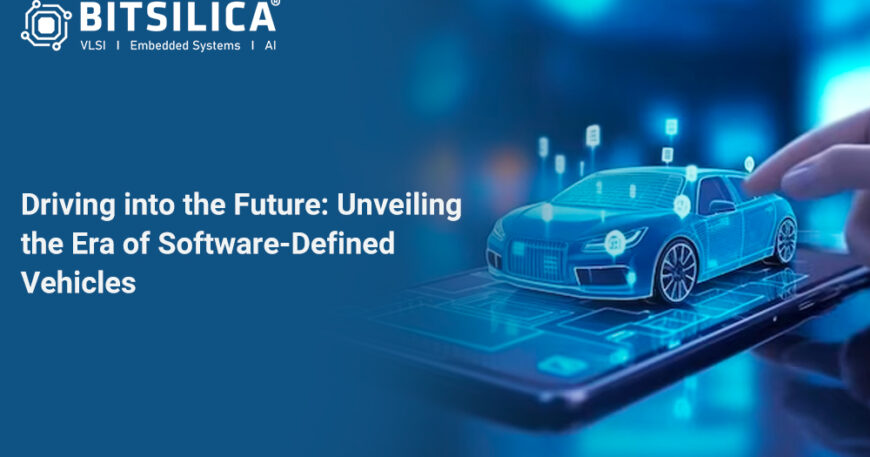Driving into the Future: Unveiling the Era of Software-Defined Vehicles
Opportunities for Engineers
For engineers, the rise of SDVs opens doors to a myriad of opportunities. Proficiency in embeddedsoftware development, real-time systems, cybersecurity for vehicular networks, and AI algorithms forautonomous systems is becoming increasingly valuable. Additionally, expertise in cloud infrastructureand data analytics for vehicle telemetry and user experience customization are crucial skills in thistransformative domain.
Why Cars are Now Called SDVs
The term “Software-Defined Vehicle” emerges from the pivotal role software plays in vehiclefunctionality. In contrast to traditional vehicles, where hardware dictated capabilities, SDVs leveragesoftware for enhancements, updates, and customization. This shift is driven by advancements inembedded systems, the Internet of Things (IoT), cloud computing, cybersecurity, AI, and machinelearning converging to redefine the automotive experience.
Exploring the Significance of SDVs
The significance of SDVs lies in their transformative potential. By integrating cutting-edge technologieslike AI-driven Advanced Driver-Assistance Systems (ADAS), Vehicle-to-Everything (V2X)communications, and autonomous driving capabilities, SDVs offer unparalleled levels of safety,efficiency, and personalization. Furthermore, the shift towards EVs and the integration of renewableenergy sources underscore the role of software in managing complex power systems and batterytechnologies.
Unveiling the Complexity
Modern high-end vehicles now boast over 100 million lines of code, surpassing the complexity of evenspacecraft. A comparison with an F-35 fighter jet, which operates with about 25 million lines of code,highlights the advanced software capabilities required in modern vehicles. This explosion in lines ofcode signifies a shift from primarily hardware-dependent functionalities to software-centriccapabilities, encompassing autonomous driving systems, ADAS, and intricate infotainment systems.
The Technological Leap
Comparing software complexity with historical space missions, such as the Apollo GuidanceComputer’s 145,000 lines of code during the first moon landing, emphasizes the profoundadvancements in automotive technology. SDVs are not just a shift in quantity but a leap in quality, asthey pioneer the integration of cutting-edge technologies like IoT, AI, machine learning, and cloudcomputing.
Conclusion
As the automotive industry embraces software-defined paradigms, the demand for engineers proficientin these new technologies is escalating. Our blog endeavors to equip aspiring and current engineerswith the knowledge and insights to excel in this evolving landscape. By understanding and masteringthe concepts and technologies that drive SDVs, engineers can position themselves at the forefront ofthis exciting field, actively shaping the future of mobility. Join us in exploring the intricacies ofSoftware-Defined Vehicles and learn how to engineer the cars of tomorrow.
Key Phrases: SDVs IoT V2X EVs ADAS
Explore More: 3D SoC design and tech: Future of innovatio





